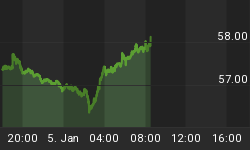3D printing, also called additive manufacturing, is what might best be described as a disruptive technology. It arguably is potentially a 'disruptive technology' because:
-
disruptions of the sort we are now seeing with additive manufacturing will in the long run have a major impact on companies with large numbers of employees;
-
small companies will be able to design and prototype a variety of products before sending them to market, but they will also be able to manufacture new products much more cheaply. This will lead to increased employment for small and medium sized entities, but not at a scale that will have a major effect on overall employment;
-
large companies will also have to compete among each other with fewer employees and a different type of worker. These workers will be knowledge-based, driven as much by innovation as by new ideas and new ways of interpreting markets;
-
markets will be more fluid and much more responsive to the shifting and sometimes unpredictable needs of consumers;
-
the combination of social media and highly customized product production will alter the balance of manufacturing in general. In particular, productivity can rise through the use of machines (as has been the case over the last one hundred years), without employment following suit. This is a problem that China will face as costs per worker go up and more and more manufacturing moves back to countries like the U.S.; and,
-
the road ahead will see a combination of the larger corporations growing worldwide, and expanding cottage industries that service niche markets gaining strength.
Taking the U.S. as but one example, the U.S. lost six million manufacturing jobs from 2000-2010. These losses will not be made up from conventional manufacturing. The challenge will be to develop new kinds of manufacturing processes that are scaled to leaner economic times.
Further, product lines will have to shift as more information is gleaned from the prototyping capabilities fo 3D printing. Take a company like Chrysler that uses and develops many car parts that are injection molded. By way of examples:
-
Chrysler anticipates that it will use additive manufacturing to prototype over 80% of the products it develops;
-
SC Johnson puts that same figure at 100%; and,
-
Hewlett Packard will use 3D printing to prototype nearly all the new printers it will produce over the next few years.
The initial impact is in the design of these products, but as 3D printers scale more effectively to different industries, there will be no reason to hold off using them for larger projects.
That said, additive manufacturing is only one part of the road ahead. Computer-aided design allows, even encourages, the development of new products. The computer is a wonderful place to explore all sorts of possible products and to simulate a variety of real world tests to see if the product has potential. There are very few products on the market today that have not gone through some profound examination using simulation. These range from the mechanical properties of a product to its possible impact within the market place.
3D printing is simply an extension, and a powerful one, of already existing strategies that make use of intelligent machines to augment human productivity. As the CEO of Autodesk says:
"I was talking to an engineer the other day at a consumer electronics company. They use our software for doing the analysis for plastic injection molds. To make a mold (out of steel) is at least a hundred thousand dollars, and the choices you make in how you design that mold affect the yield and quality of millions of parts. He used to run a simulation that took 36 hours, and some of the molds that he wanted to run were to big for the computers he had. Now (his) time has gone down to less than three hours. And what he finds himself doing is running multiple simulations at the same time and choosing the best answer. It leas to a cheaper and better product. You'll have fewer failures." ~ (MIT Technology Review, Business Report, January 2013, pp.12-13)
Additive manufacturing allows creative employees to simulate, prototype, produce and then scale manufacturing to levels needed for product development and sale. To put 3D printing in further perspective:
-
NASA is thinking of 'producing' as space station on the moon using in situ 3D printing - see Giant NASA spider robots could 3d print lunar base;
-
some Dutch architects have just printed a 3D house - see Dutch architects first build house 3d printer; and,
-
General Electric has decided to use additive manufacturing as an option for discrete parts production.
While it is too early to offer meaningful predictions in a quantified way, it is fair to say in early 2013 that:
-
as design and management teams develop closer working relationships, we will see more disruptive products in the marketplace than ever before;
-
based on history, disruptive technologies typically take between 3 - 5 years to have an impact that is statistically verifiable; and,
-
it is virtually certain that 3D printing will result in increased manufacturing productivity and diminished labour hours per unit of output.















